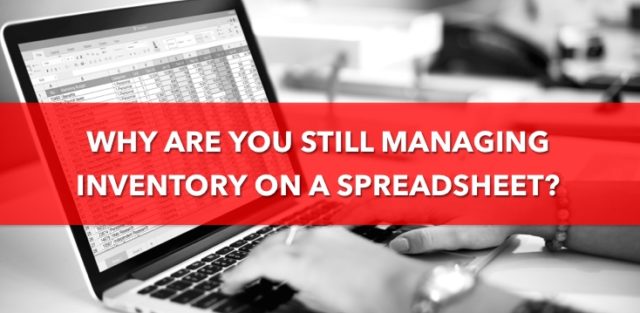Jan 03, 2019
Your inventory spreadsheet doesn't work

Over the years working in supply chain management, we’ve seen companies employ a wide variety workarounds for managing their stock levels. Among all the customized, ad-hoc solutions we’ve encountered, there’s one particular tool we see far more often than any other:
The inventory spreadsheet.
Even as the technology in the inventory replenishment space has become more advanced and less expensive, many of the businesses we talk to have continued to lean on their spreadsheets. It’s disheartening to see the unnecessary costs piling up for these businesses, and these problems start with this outdated tool.
Why Spreadsheets?
Ten or 15 years ago, the inventory spreadsheet made a lot more sense. It was a helpful business tool that came with a minimal cost. The average operating system on a PC comes equipped with a spreadsheet application; using that tool to build an inventory spreadsheet seems like an essentially cost-free choice to keep track of inventory levels.
Larger businesses could afford more elaborate tools that incorporated algorithms to assess sales histories and generate forecasts, but those came with larger price tags and more complicated implementations.
Meanwhile, smaller and mid-sized firms were unable to splurge on those tools and they were basically content to keep their inventory spreadsheets — even as their supply chains became increasingly complex. Spreadsheets just weren't able to keep up with the job at hand, and this ineffective process began hurting their profitability as a result.
The Wrong Tool for the Job
The simple fact is that using a spreadsheet to aid in inventory replenishment is a labor-intensive process. An inventory manager could spend half of their workweek managing, parsing, and interpreting the data. Worse still, it’s nearly impossible to design a spreadsheet that correctly aggregates and synchronizes the necessary data to properly and accurately:
- Forecast demand
- Assess risk factors
- Calculate useful safety stock levels
- Produce optimal purchase orders
The spreadsheet is the wrong tool for this job exactly because it cannot handle those tasks. Frankly, it just wasn’t designed to. And yet this is the preferred tool of many smaller and medium-sized businesses that manage inventory.
Only an application designed for those specific tasks can handle the modern supply chain and create optimized purchase orders, which reduce costly excess stock while minimizing painful stock-outs.
There is a better way
The good news is there are now tools in the market specifically designed for small and medium-sized businesses that utilize the same principles and best practices that larger companies rely on daily. These new applications allow businesses to drive more profit from their inventory through smarter replenishment and demand planning.
There’s no need to remain trapped on an inventory spreadsheet. It’s time to move past outdated planning methods that hurt profits. There is a better way.
Contact the NETSTOCK team today to see what you can do to make improvements with your inventory.
Written by Eric Graf
Eric works with the NETSTOCK channel partners to help solve key supply chain problems together.